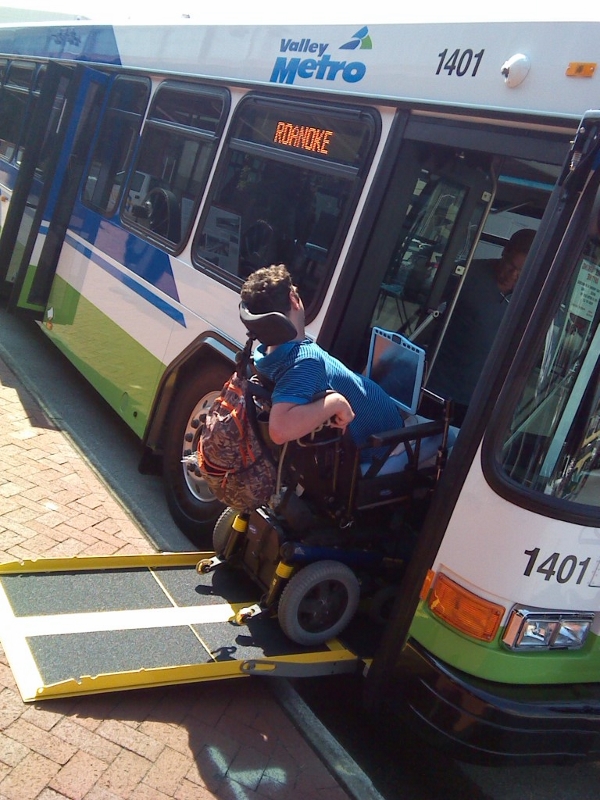
Valley Metro recently rolled out nine new buses that make it easier for those with mobility issues to board, after their debut outside the Virginia Museum of Transportation. The “low floor” technology models, almost $400,000 apiece, were paid for with federal and state grants, and local matching grants.
The new models, which hold slightly fewer passengers (around 31 versus 36 seated, plus around 15 standing room) than the existing models, are also “clean diesel” buses that don’t belch the large, black clouds of smoke many associate with diesel engines.
The low floor technology means that these buses almost “kneel” all the way to the ground at the front entrance, before a ramp is extended, making it easier for people in wheelchairs and others with mobility issues to board.
Valley Metro general manager Carl Palmer said the other stock in the 49 bus fleet would eventually be replaced with similar models as their life expectancy is reached – although it’s pegged at 12 years right now.
Former Roanoke City Councilman Bev Fitzpatrick, also chair of the Smartway Bus that runs between downtown Roanoke and the Amtrak station in Lynchburg, said he was “proud” to see the new buses.
Fitzpatrick also showed off a restored 1958 GMC diesel bus that will be housed at the Commonwealth Coach and Trolley Museum at Campbell and 18th Street. “We found it in Floyd County and worked on the guy for 20 years before he gave it to us,” said Fitzpatrick, a former Valley Metro board member when he was a member of City Council.
That museum, which Fitzpatrick called “The official transit museum for the state of Virginia,” is not open to the public but may be viewed on request. It’s a sister facility to the Virginia Museum of Transportation, where he is the executive director.
Six of the [Commonwealth museum’s old buses] are from Valley Metro,” noted Fitzpatrick, who used to ride city buses to school before yellow bus service came along. City Motor Transit, the previous public transportation service, charged students ten cents each for the ride to get back and forth from school.
“We never heard about handicapped access,” said Fitzpatrick about older buses like the 1958 model, “there was none. [The new buses] make it so much easier. Valley Metro continues to change and make it better for everyone.” Palmer said the new buses were built in Hayward, California.
“It’s very rare that we have standing room only,” said Palmer of the smaller buses, although he noted that Valley Metro could purchase a higher capacity model in the future if its warranted.
The new buses each have 8 security cameras inside and out; they all feature bike racks as well. Vice Mayor David Trinkle, on hand for the roll out, said the city “must continue to invest in solutions that improve the mobility for all of our …residents.”
Trinkle said Valley Metro was part of a regional transportation system that must seek ways to efficiently move workers, students, the elderly and visitors, “who take advantage every day of the routes that Valley Metro offers in our city.” Palmer said the daily average ridership for Valley Metro is around 8000.
Trinkle called the new buses “a significant step forward” and one that he hopes leads to increased ridership, “as an alternative to driving and will help the environment – and the health of all our citizens.” Providing a “first class transportation network for everyone,” is the challenge going forward, added Trinkle.
By Gene Marrano


